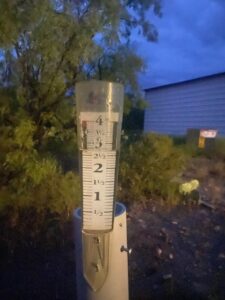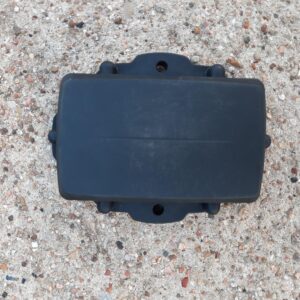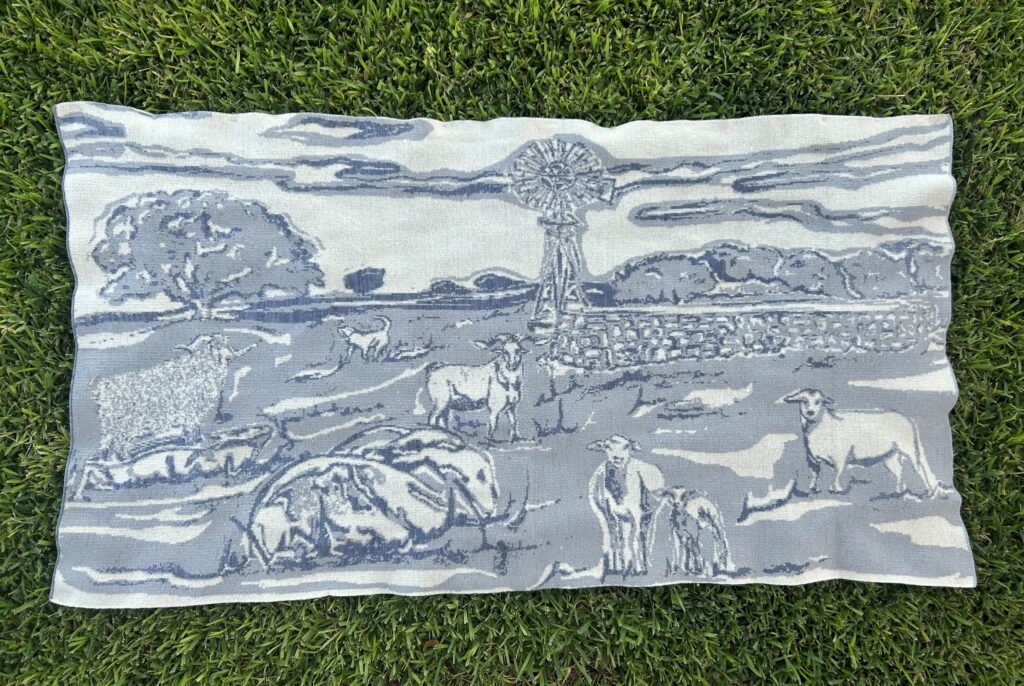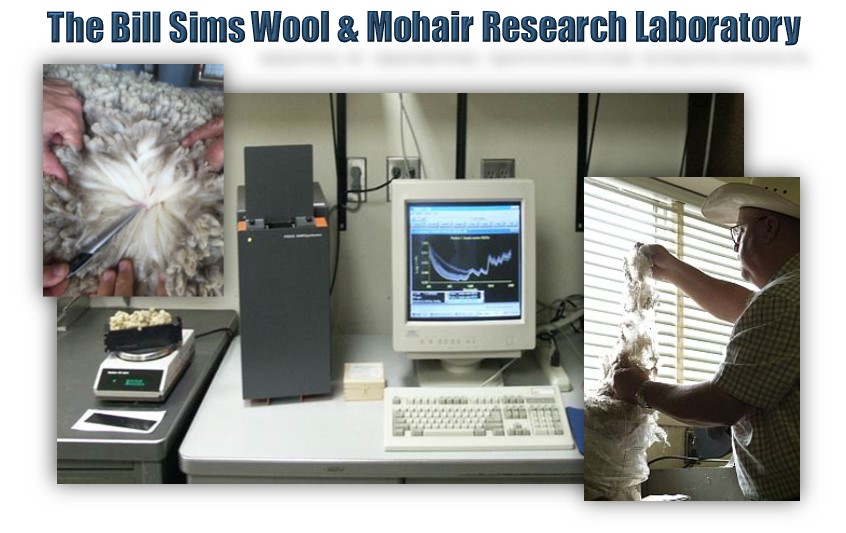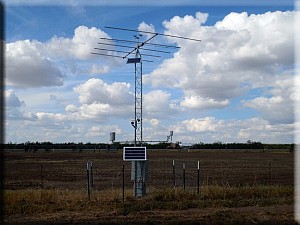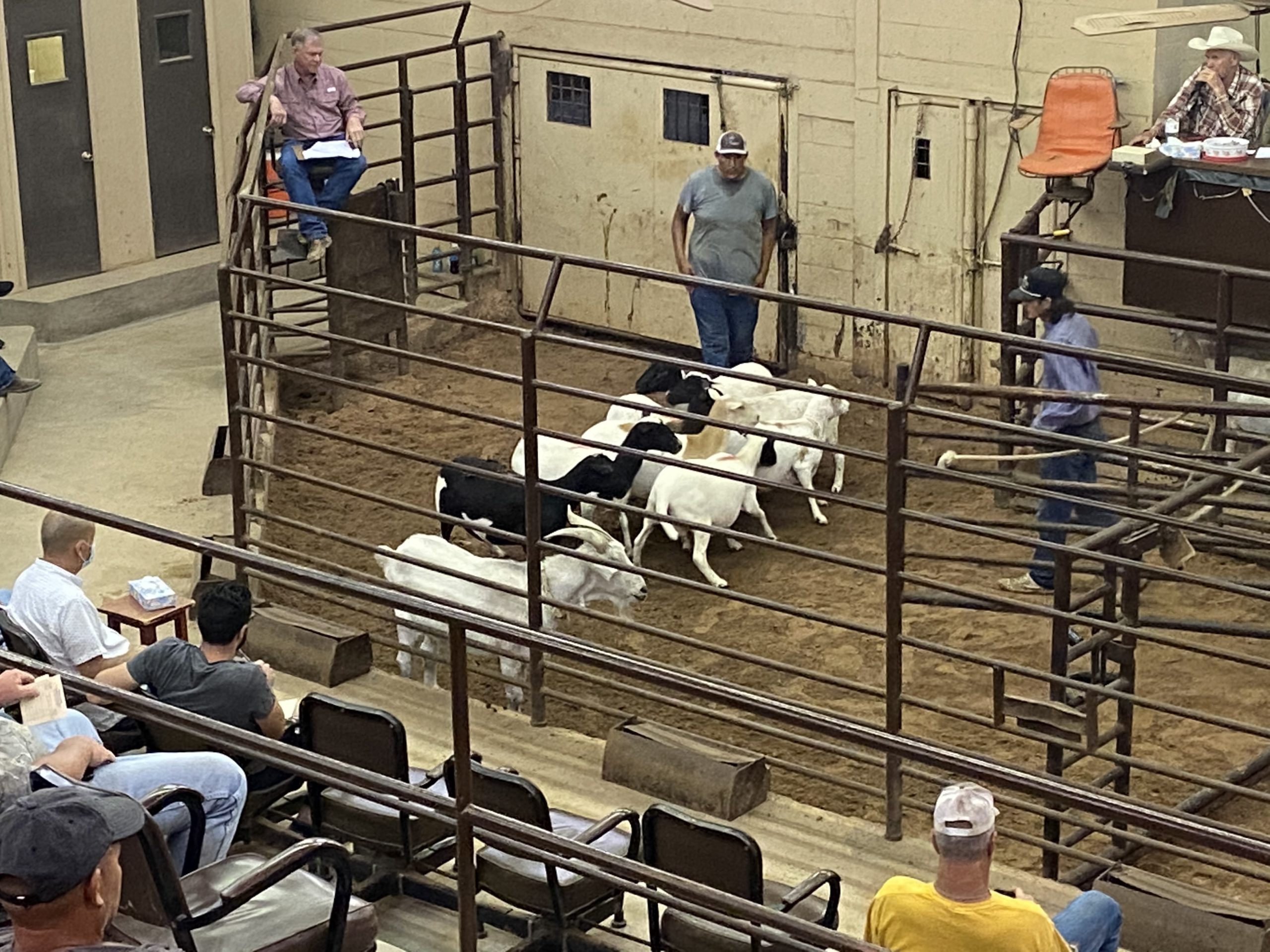We have finally received some long-overdue rain across the state, quenching the dry soil. We recently got over four inches in a single day at the AgriLife Center, creating a lot of mud in the pastures. Long-range forecasts show that we will have a wetter-than-normal winter this year due to El Nino. Hopefully, enough rain will fall this winter to relieve the drought and allow the grasses to repopulate our sparse rangelands.
On another note, make sure to use tick preventatives year-round. On Sept. 17, we lost a three-year-old dog, Squiggy, to Ehrlichiosis complications. Squiggy was a Great Pyrenees from our bonding project’s third round of dogs. He was a friendly dog that never left his goats from the time he was a puppy. Squiggy learned the ropes from our old matriarch of the program, Queenie, who is now retired. Both dogs
worked well together. We will miss your smile, Squiggy!
AgriLife Livestock Guardian Dog Program: Events and Update
We will host the AgriLife Fall LGD Field Day on Oct. 27 at the Farmhouse Vineyards Armory in Brownfield, TX. The event will include workshops, a producer panel, vendors, dog breeders, and a ranch tour. Check out our Facebook page for more information. Early registration is $25 for a single and $40 for a couple. Make sure to register before the price increases on Oct. 20! Contact the Terry County AgriLife Extension office at 806-637-4060 or email Debbie.cruz@ag.tamu.edu to register for the event.
Our next webinar will be held on Nov. 16 at 3 p.m. The webinar will discuss the Karakachan LGD breed and will be presented by Phillip Sponenberg, DVM, founder of the American Karakachan Dog Association. Check out the events page on our Facebook page for more information and to register for the event. You can also register for the webinar on our website.
Invisible Fence Containment Systems
Anyone who has used an LGD knows that roaming can be problematic with these dogs. As part of our bonding project, we have been studying the use of electric fences in bonding pens. Our research has shown that using hot wire in a bonding pen decreases the amount of roaming in adult dogs compared to pups bonded without hot wire in their pens as adults. We have also installed an Invisible Fence Brand GPS-based system on six pastures at the AgriLife Center ranging in size from 100 to 225 acres to further study the use of electric fence systems. Preliminary results have been positive from dogs placed in the system. When roaming adult LGDs have been placed into a pasture system with an invisible fence for three months and released back to a ranch, the dogs have decreased or stopped excessive roaming for over six months. We are also starting to test the SpotOn Fence system as well.
Both the SpotOn Fence and Invisible Fence Brand systems have pros and cons. Hopefully, this chart below will help simplify those.
| Containment System | Pros | Cons |
| SpotOn Fence | · Phone App makes set up and changes to fences easy.
· Multiple pastures per collar. · Pastures can be separate from each other. · GPS tracking and invisible fence in one collar. · Cheaper than Invisible Fence Brand to set up. · Great customer service. · Great videos on how to train your dog. · Online Store. |
· Very short battery life, less than one day.
· Collar must be removed to recharge. · Collar is not secure. · Collar can be easily chewed through. · Annual service fee for the tracker. |
| Invisible Fence Brand | · 2 ½ day battery life after the dog is trained.
· Secure collar. · The collar has fibers to reinforce it but could be wider and thicker. · Replaceable rechargeable batteries. · No monthly fees, one-time cost. |
· Must be set up by the company.
· The company must make changes to pastures. · Only three pastures per collar, and pastures must “touch.” · Customer service quality depends on branch location. · Expensive to set up. · Battery gaskets can be lost easily. · No online store for collars. Must work with a local store. |
Hopefully, each company will address some of the cons we mentioned above to improve the use of these containment systems for LGD use. Feel free to contact us with any questions or comments about either of the systems we are currently testing. If there is another invisible fence containment system on the market that you believe we should investigate, please email me at bill.costanzo@ag.tamu.edu.
Bonding Project Update
Round Five Dogs
Each round of puppies in the project is scored for socialization, roaming, and overall guarding ability at eight, twelve, and eighteen months. We recently scored eight puppies in this round, and everyone scored well overall. However, two of the pups bonded at another location, following our protocols, scored low on vehicle rides. The cause was most likely the ranch foreman being injured and unable to place the dogs into a truck for a ride each week.
Producers must acclimate their dogs to riding in a vehicle during the bonding period. LGDs are often anxious and overly nervous when transported in a vehicle or trailer to a new location. It may help to bring livestock that the dog is guarding with them to help them remain calm during the ride to a fresh pasture or the vet’s office.
Roaming is calculated for the pups using GPS trackers. We are still using the Oyster 3 trackers from Digital Matters. These units can be purchased from Lone Star Tracking. Generally, roaming and patrolling outside perimeters is low at the Center because of good fencing. Still, it will increase once the puppies are placed on cooperating producer ranches at ten months of age. Patrolling outside pasture perimeters is frequent when pups are first placed while establishing their territories and pushing predators
out. It usually declines over time as the puppies mature and maintain their territories.
I have received regular questions about the Komondor pups from producers on our social media accounts. The dogs are working well and always stay close to their charges. Their hair is starting to form plates and dreads at this point to protect them from predator attacks. One important thing to note is the Komondors can get ear infections easily due to their wire hair. Regular inspection and removal of hair in their ears is important. We recently removed a large mass of hair and ear wax from Belle’s ears. The “Old Fashioned Gals” are always more excited to see people than the “Top Gun” dogs and must be disciplined for jumping. As they mature over time, the behavior has decreased.
In closing
If you enjoyed this monthly LGD blog, please don’t forget to subscribe to it with this link: The Guardian Way | Texas A&M AgriLife Research and Extension Center at San Angelo.
To provide feedback on this article or request topics for future articles, please get in touch with me at bill.costanzo@ag.tamu.edu or 325-657-7311.
The Texas A&M AgriLife Livestock Guardian Dog Program is a cooperative effort by Texas A&M AgriLife Research and the Texas Sheep and Goat Predator Management Board. Follow us on our social media sites and share them with your friends and family!
Facebook, Instagram, YouTube: @TAMUlivestockguarddog
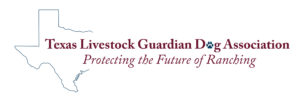 Do not forget to check out the Texas LGD Association online! Follow the organization on Facebook or YouTube at @TexasLGDAssociation, or check out their website!
Do not forget to check out the Texas LGD Association online! Follow the organization on Facebook or YouTube at @TexasLGDAssociation, or check out their website!

